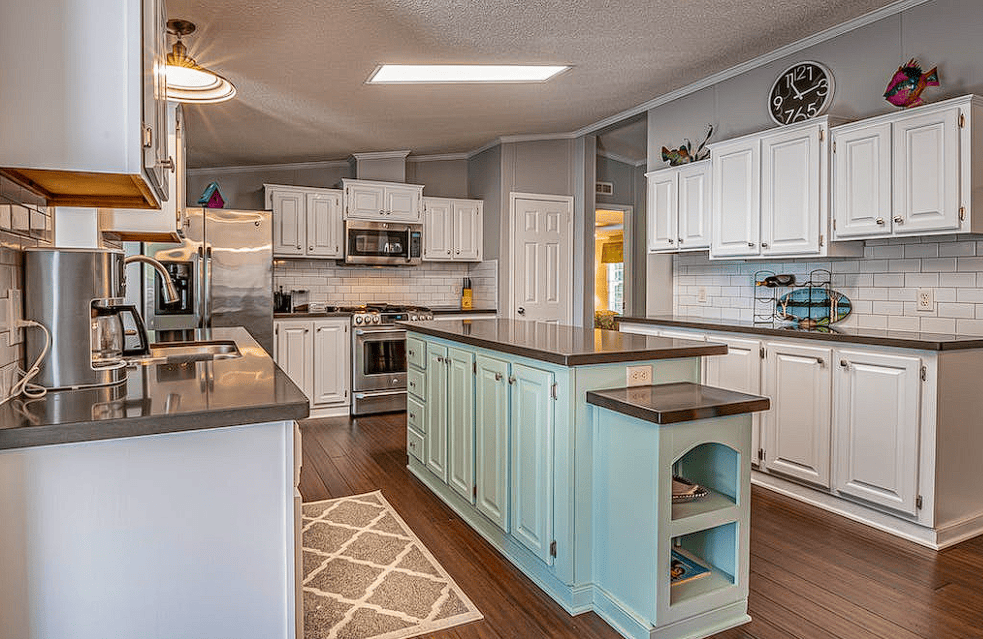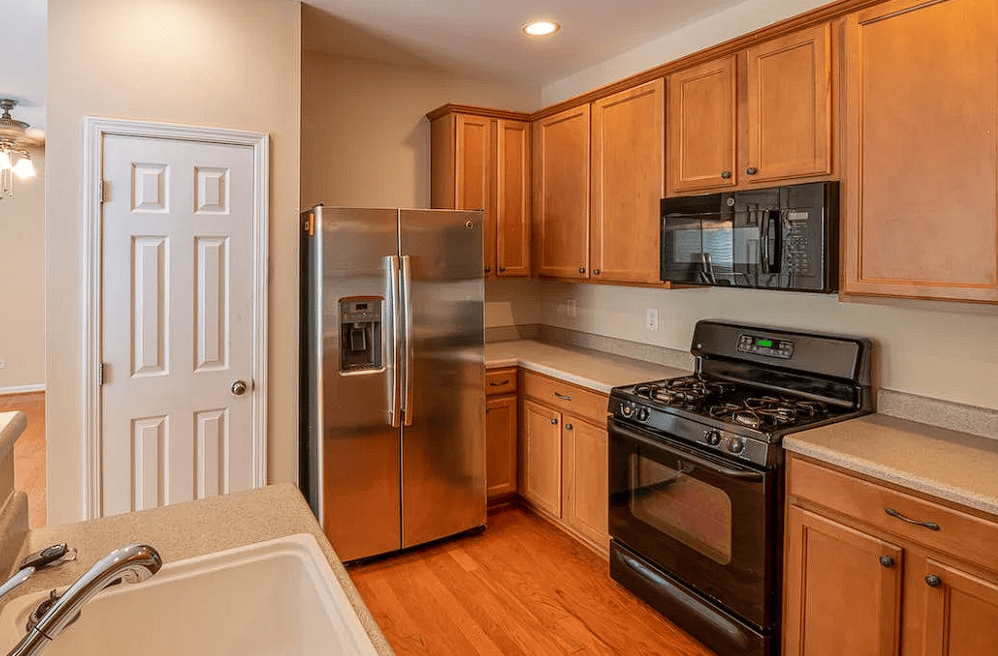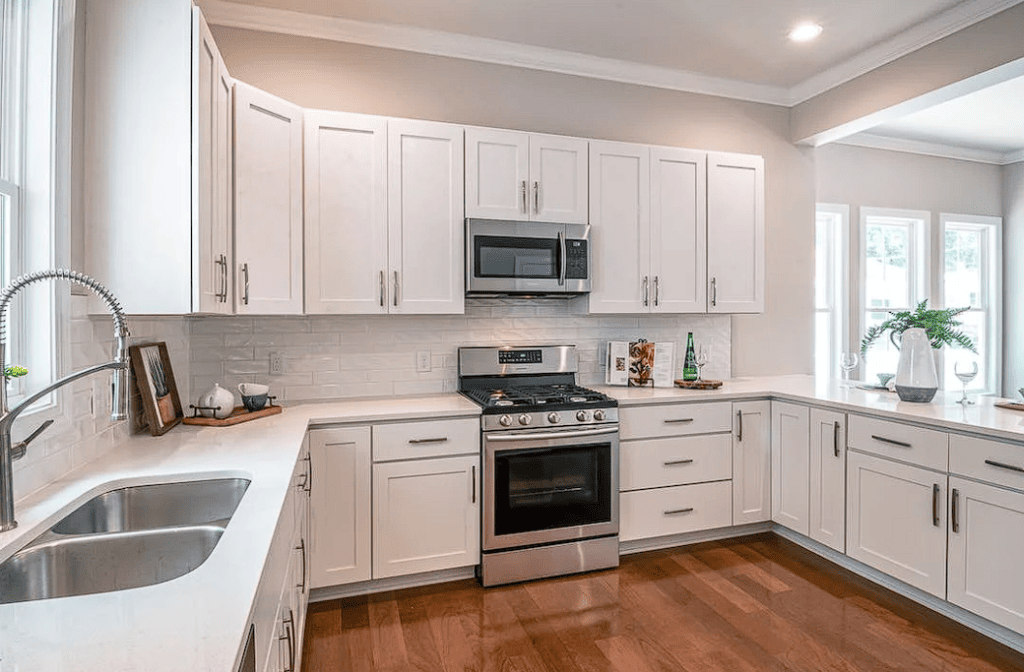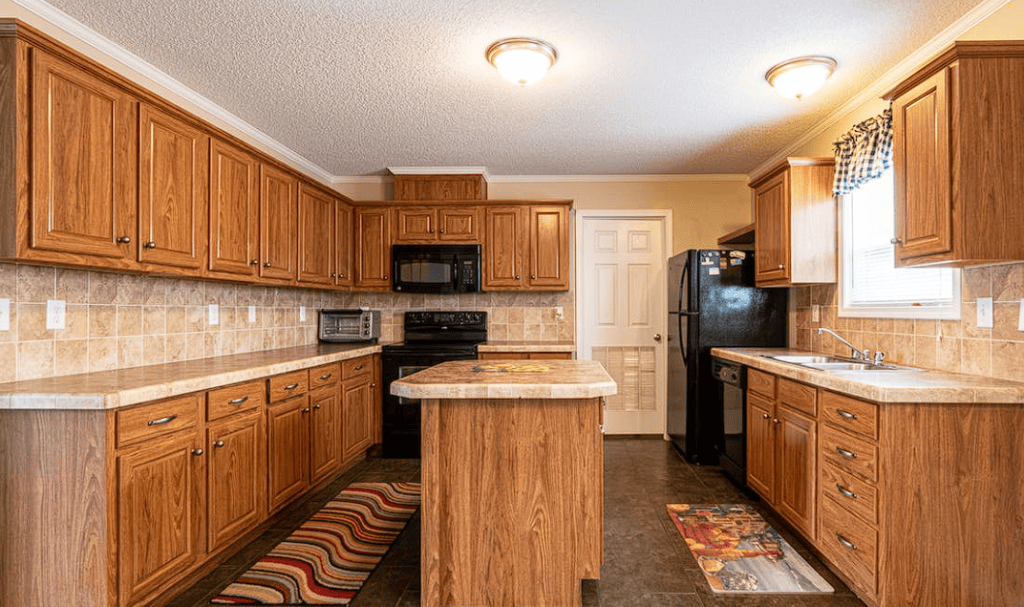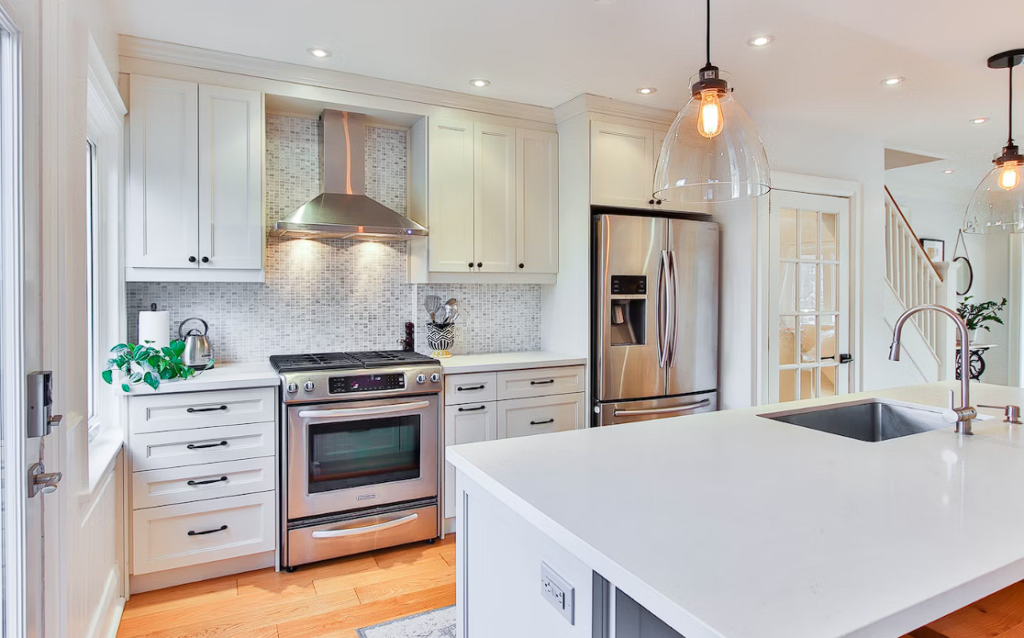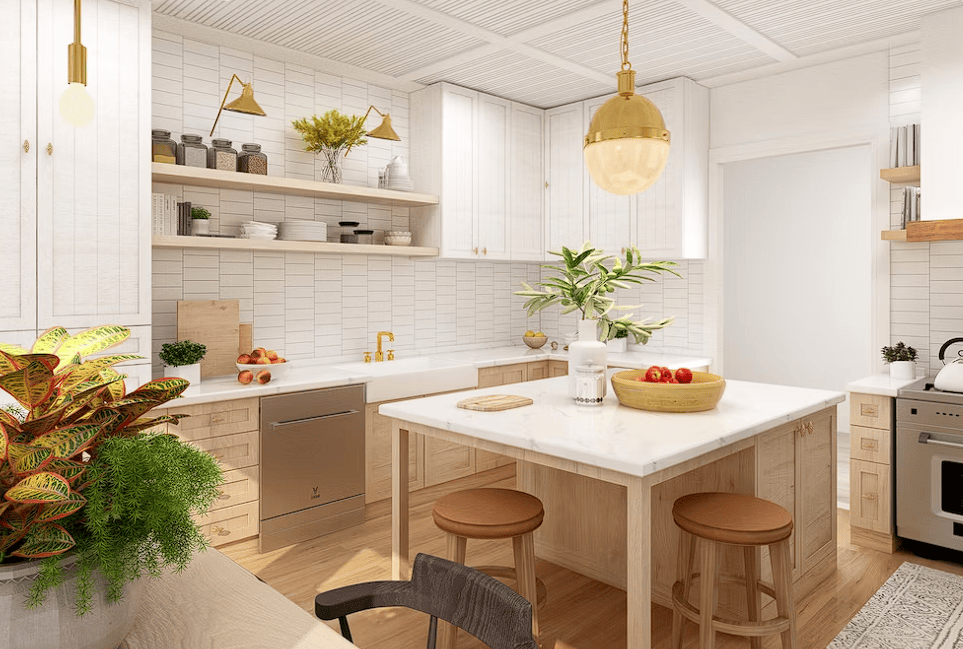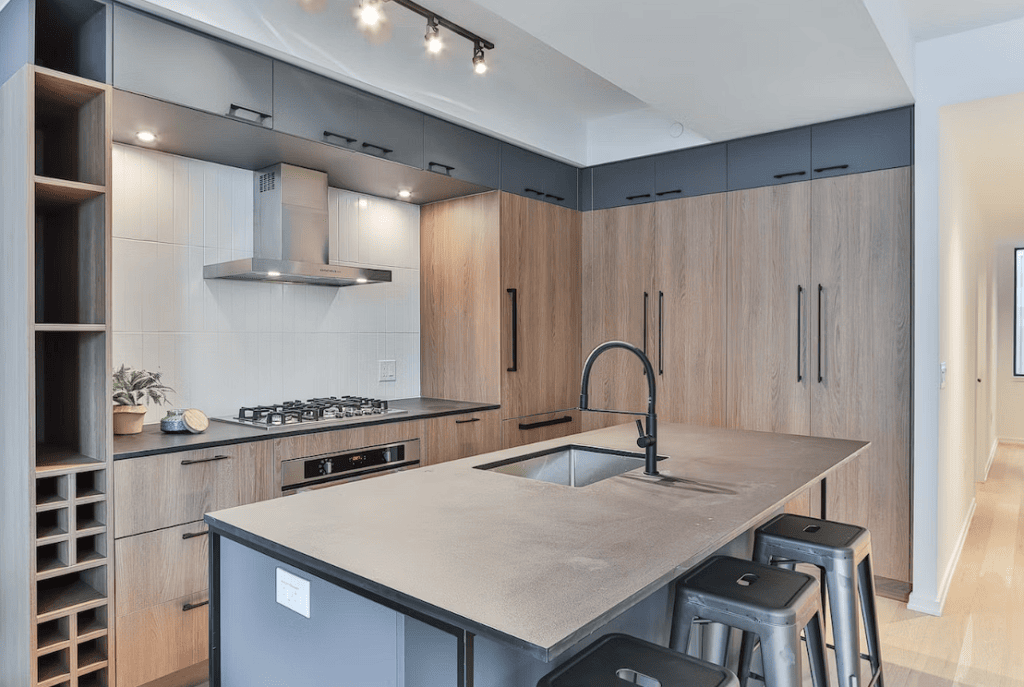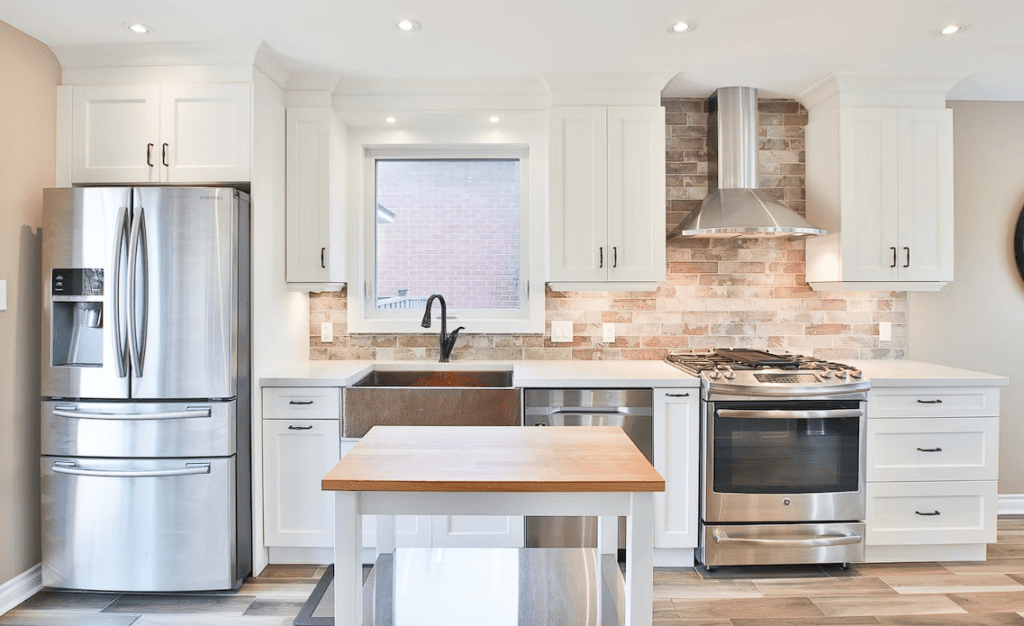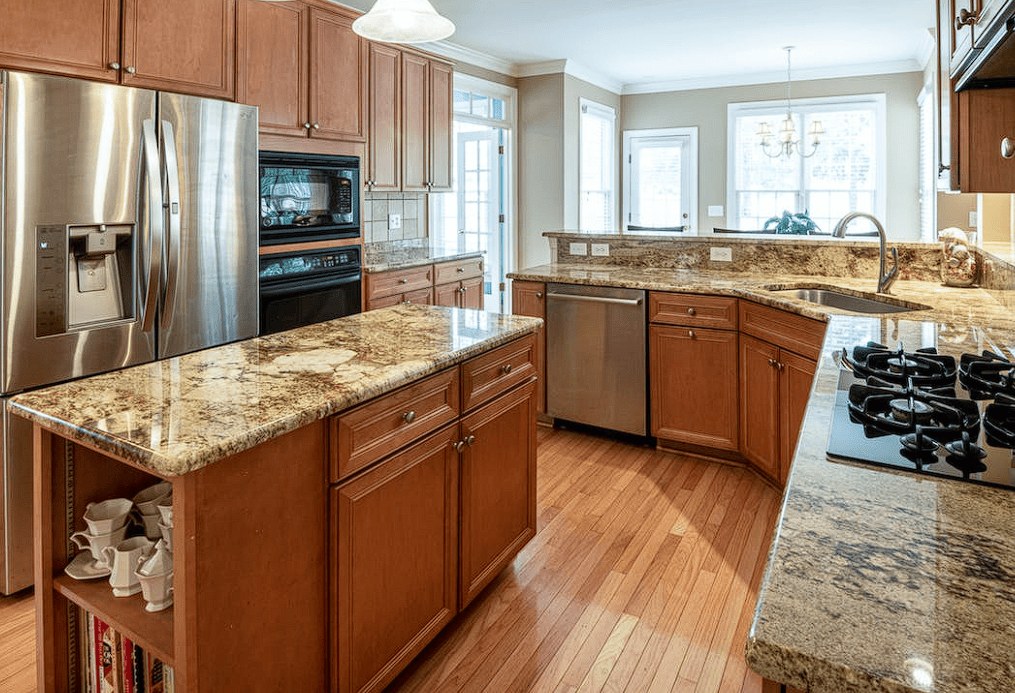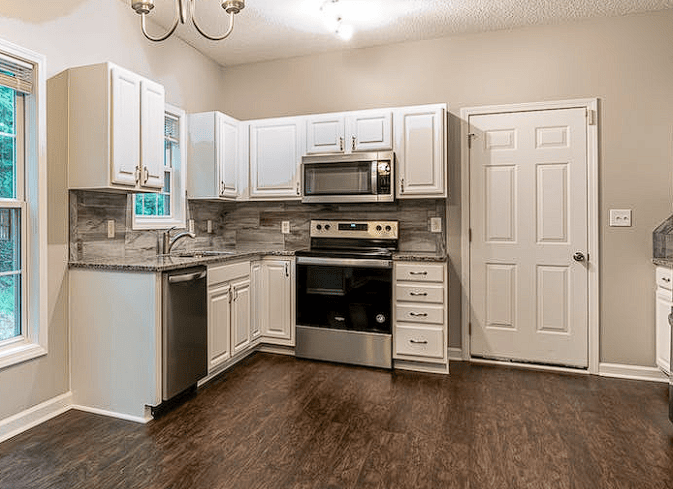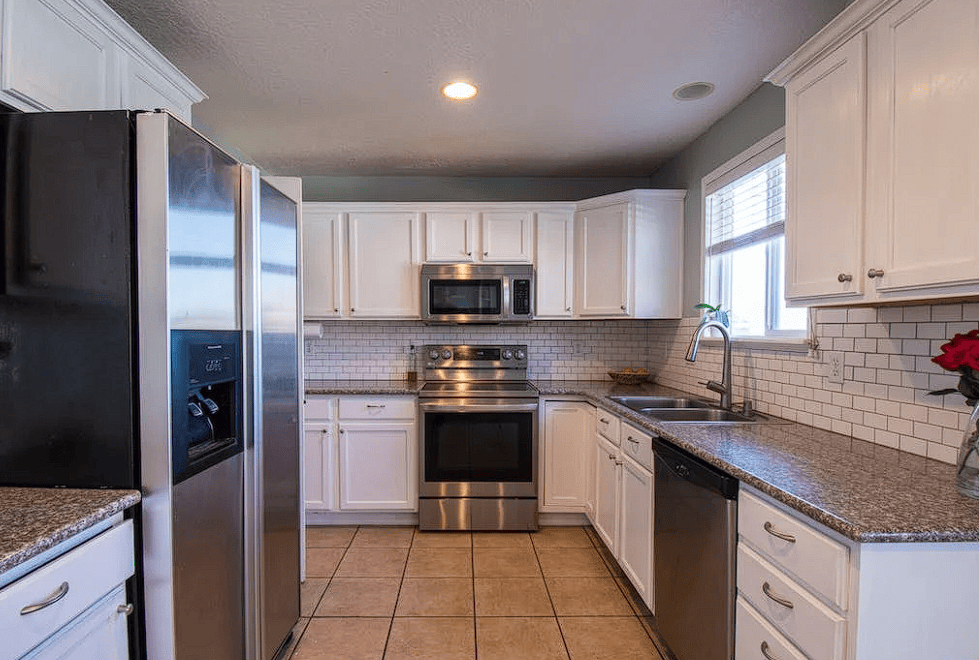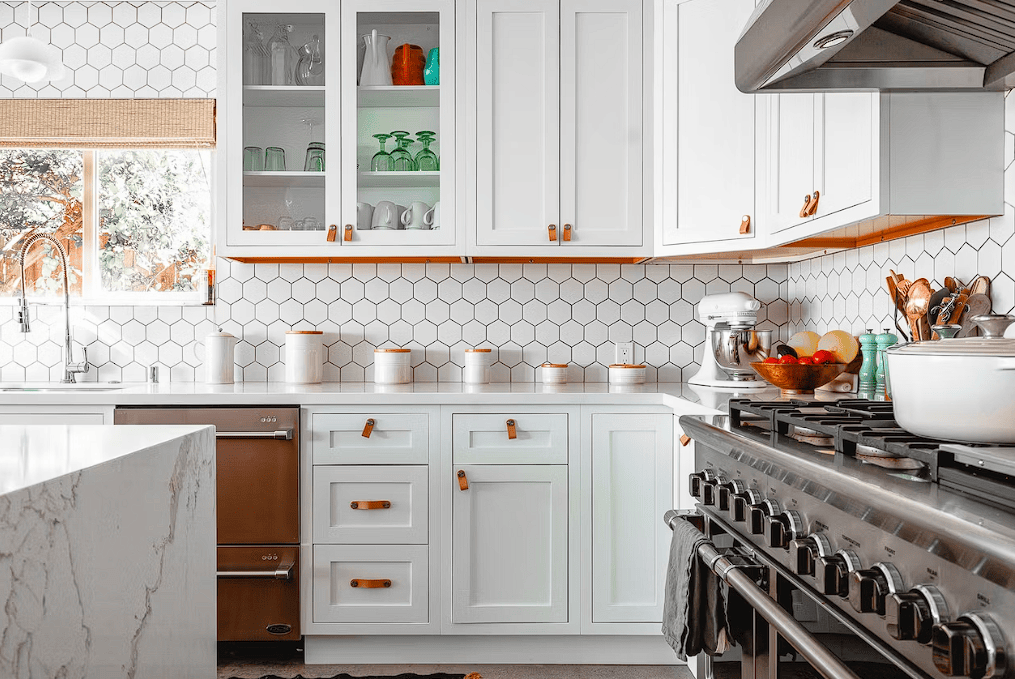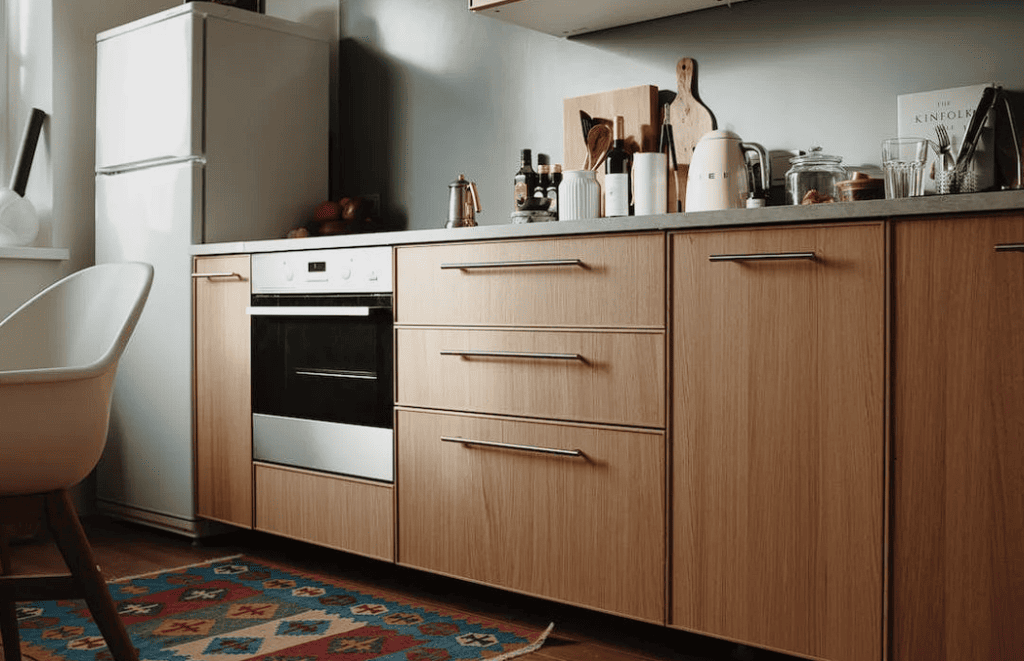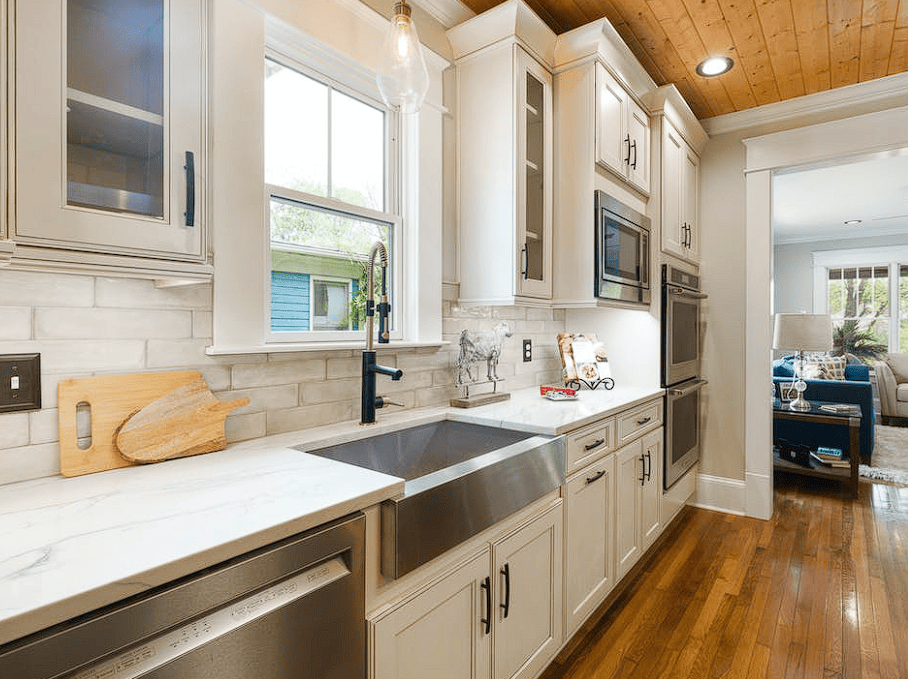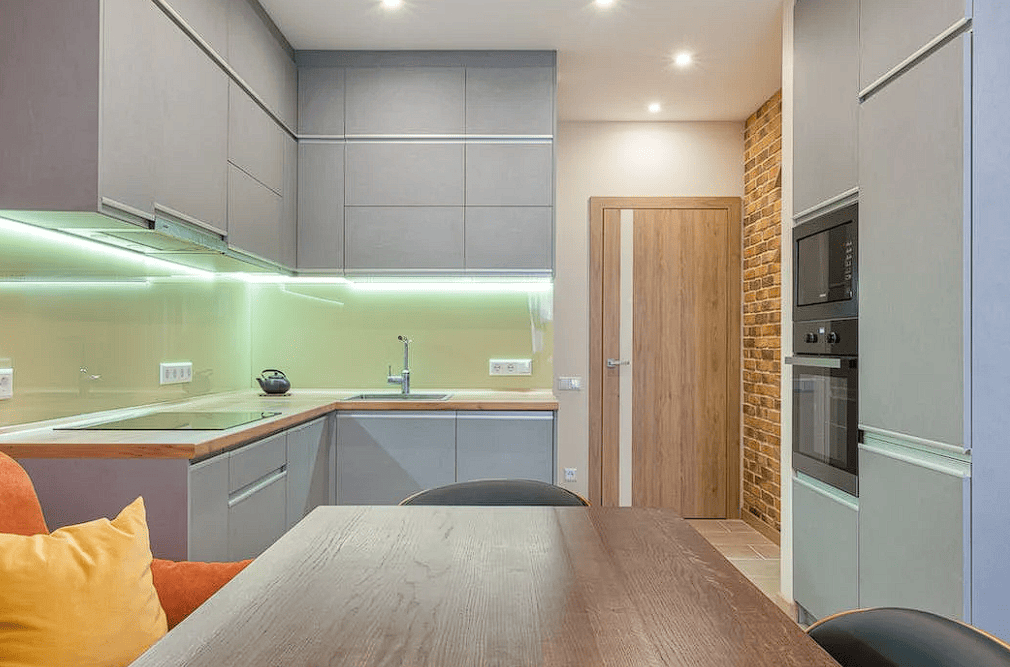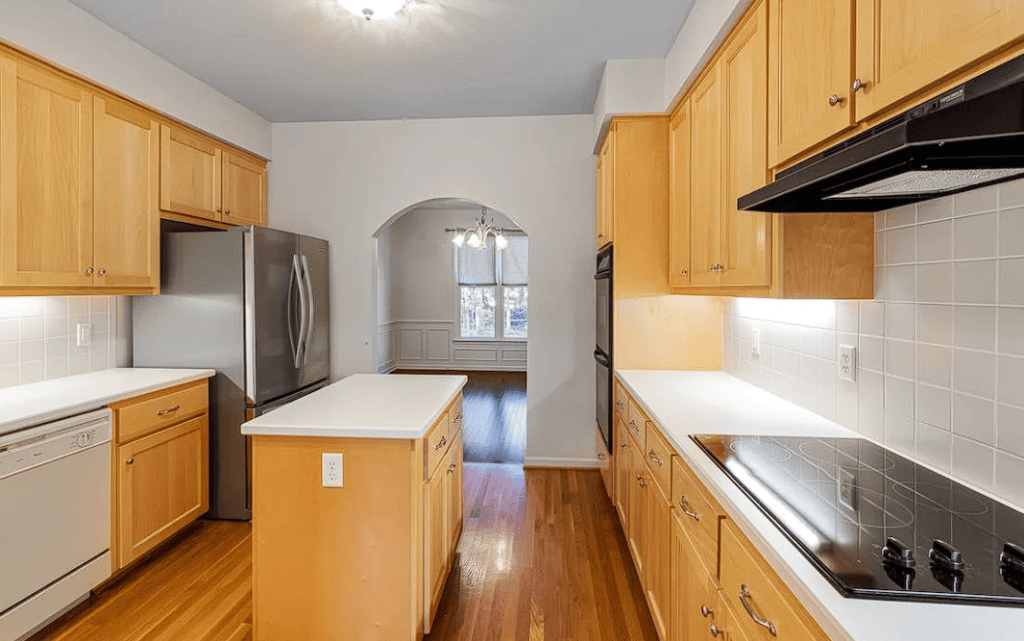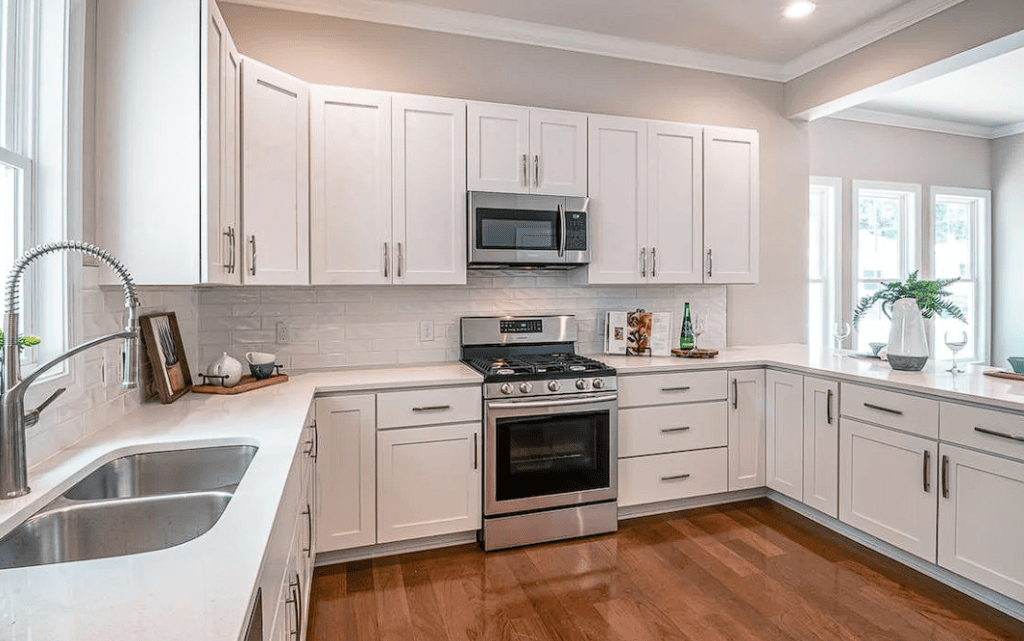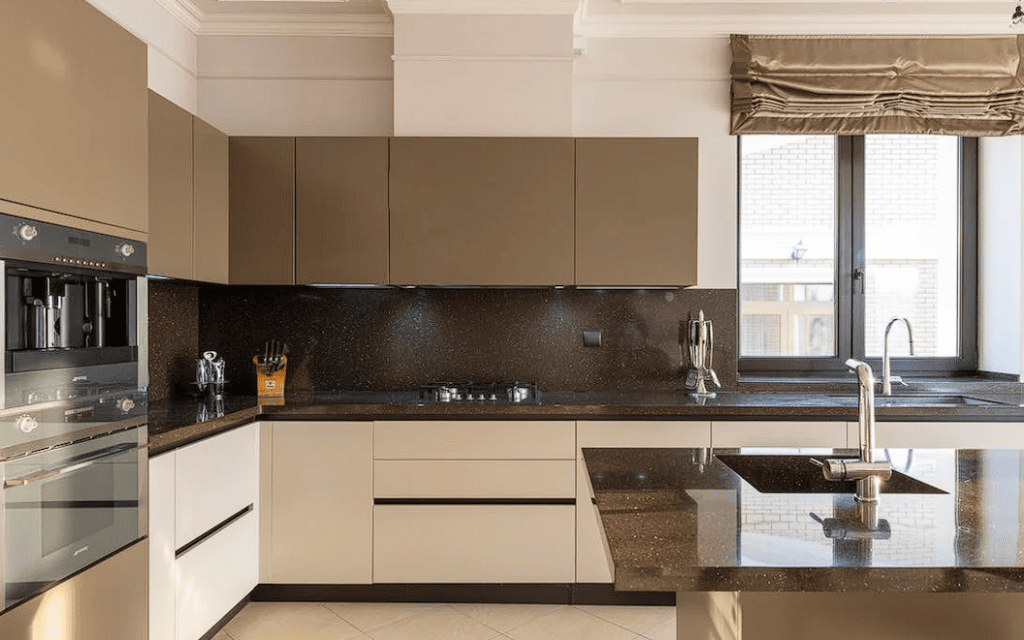Renovating or replacing kitchen cabinets is a crucial step in the process. The look of your finished kitchen will be heavily influenced by the materials you use for the cabinets. When building a new kitchen or remodelling an old one, it's crucial to invest in durable materials for the cabinetry. In this piece, we'll go over some of the best options for kitchen cabinetry materials.
Understanding The Basic Structure Of Kitchen Cabinets
Understanding the fundamentals of kitchen cabinetry is a prerequisite to learning about the various components that make up individual cabinets. The three main components of most kitchen cabinets are the box, the drawers/shelves, and the door. The carcass, or box, of a cabinet, is its main structural component and the foundation upon which the cabinet's doors and drawers rest.
Materials For Kitchen Cabinets
Cabinets for the kitchen can be made from many different materials. The ones presented here are among the most typical.
Solid Wood
It's not uncommon to find kitchen cabinets made of solid wood. It's strong and long-lasting, and it can take a beating from regular use without breaking. Common kitchen cabinet woods include oak, maple, cherry, and pine. Solid wood cabinets have timeless appeal and can be finished in any colour to complement your kitchen's decor.
Plywood
Plywood is constructed by glueing together thin layers of wood. It lasts longer than solid wood without the hefty price tag. Different grades of plywood are available, with the higher grades being of better quality and durability. Because it takes to paint or stain so well, plywood is a great material for kitchen cupboards.
Medium-Density Fiberboard (Mdf)
Fibres of wood are combined with resin to create MDF. Its smooth surface and lack of visible wood grain make it a popular choice for painted kitchen cabinets. MDF is more affordable than solid wood and lasts just as long.
Particleboard
Particleboard is constructed from sawdust and resin. It's commonly used for the cabinet box due to its low cost. It can be damaged by water and is not as sturdy as some other materials.
Categories Of Cabinets
What kinds of cabinets are needed to finish a kitchen depends on its size and layout.
Wall Cabinets
Cabinets affixed to the wall are known as wall cabinets. They can rest on the counters or be mounted flush to the ceiling. Wall cabinets never have drawers, but they can be outfitted with adjustable shelves of varying heights to meet the needs of the customer. A hanging rail, box frame, and cabinet doors are the main items needed for assembly.
Base Cabinets
The term "base cabinets" refers to the lower, floor-level cabinets. They are the structural backbone of the kitchen, holding up appliances like the stove and sink. Drawers placed above the cabinet doors of a base cabinet add even more storage space, making it ideal for storing dishes, silverware, and small appliances. Usually, the drawer fronts will have the same style as the doors.
Tall Or Pantry Cabinets
Tall or pantry cabinets are much higher than standard wall and base units, typically measuring 84 to 96 inches. Pull-out pantries with plenty of room for spices and baking goods, as well as cabinets to hold a microwave and wall oven combination, are just two examples of the many cabinet types available in this section.
Specialty Cabinets
You may need more than just standard square or rectangular cabinets to fully outfit your kitchen. For instance, corner cabinets are made to conceal the joint between two walls. They match the lower cupboards in terms of height and depth. A lazy Susan can be installed inside to make the most of the available space. You may also be asked to build bottle racks or plate hutches.
Common Kitchen Cabinet Styles
The cabinet layout is heavily influenced by the client's dream kitchen aesthetic. Some of the possibilities have an antique look, while others have a more contemporary feel.
Shaker Style.
The Shaker style of cabinet door is very common in modern kitchens. They can be easily adapted to either conventional or cutting-edge decor thanks to their minimalistic design and recessed panels. Shaker-style cabinets are plentiful in stock options because of the style's widespread appeal.
Flat Panel.
Slab cabinets, which are another name for flat panel cabinets, are modern and chic in the kitchen. Each door to a cabinet is a solid panel without a frame. Since only the panel is visible from the front of the cabinet, any box can be used.
The doors are inset. Instead of having the door hinged on the outside of the cabinet, it is flush with the cabinet body in an inset design. During construction, a lot of care must be taken to ensure that each door is a perfect fit for its respective box.
Raised Panels.
A door with a raised panel has its central panel raised, giving the door a more three-dimensional appearance than a door with a flat front. Your customer can choose between a uniform colour scheme throughout or a two-tone look with a contrasting outer frame and central panel.
Glass-Front Panels.
Glass display cases reveal their contents through a see-through door. Wall cabinets with glass doors are commonly used to showcase a client's fine china, barware, or other valuables.
Importance Of Quality Kitchen Cabinets
Improve Kitchen Cabinet Organization
A wide variety of items need to be stored in kitchen cabinets. They need space for a wide variety of kitchen necessities, including ingredients, tools, and books. The ability to maintain order in the kitchen is greatly facilitated by having sufficient cabinet space. This can help you locate the desired information quickly and with fewer hassles. Furthermore, a well-organised kitchen will continue to look far better than a cluttered one.
Enhance Functionality
When the kitchen is disorganised and cluttered, it's hard to work efficiently there. Having enough storage space in the kitchen cabinets is crucial. This can simplify your cooking experience and speed up your procedures significantly. If there isn't enough storage in the kitchen, food and other items will end up all over the counters. Space for food preparation may be constrained.
Characteristics Of High-Quality Kitchen Cabinets
All-Plywood Construction
The majority of cabinet boxes are constructed from either plywood or particleboard. Full plywood sides and backs are a hallmark of high-quality cabinets, which serve to keep the units square during transport and assembly, support the weight of substantial counters, and keep out moisture. Particleboard can be substituted for wood at a lower cost. It can be easily ruined by water and crushing, and blowouts at screws and joints can be a pain to fix.
Full-Height Back Panels
The back construction has an effect on the longevity and ease of cabinet installation. Full plywood back panels (3/8 inch or more) provide extra support for the most sturdy cabinets. Less expensive options include using metal hang rails, thin panels, and rails, brackets, and picture frames. Cabinets with unstable back panels are a safety risk. Kitchen cabinets with a plywood back are the most stable and accurate option.
Soft-Close Hinges
Cabinet hinges are essential because they allow you to open and close the doors of your cabinets. Doors that are too stiff, too loose, or too uneven, or doors that won't close altogether are all symptoms of poor hinges.
Six-way movable steel hinges with a soft-close feature. The nickel plating and hardened steel used in a good cabinet hinge allow for a gentle closing action. Cabinet doors expand and contract with the seasons, so it's important that the hinge can be adjusted in six different ways (in, out, up, down, left, and right).
Undermount, Soft-Close Drawer Glides
For years of trouble-free operation, your cabinet drawers will thank you for investing in high-quality drawer glides (slides). The need for heavy-duty glides increases in proportion to the amount of weight your drawers must transport. Weak glides can cause drawers in cabinets to sag, become loose, or even stick.
Hardwood Dovetail Drawer Boxes
A higher quality drawer box should be considered if the drawers are sagging, bowing, or losing their front faces. When it comes to cheap kitchen cabinets, the drawer boxes and joints usually give out first. Dovetail joints, in which the drawer box sides are milled to include interlocking teeth, are much stronger than the more common staple and notched butt joints.
Fully Assembled In The Factory
Cabinets that are shipped fully assembled have already been constructed in the factory, packaged, and delivered to the job site. RTA cabinets are meant to be put together by a handy homeowner or professional builder. Consumers can expect to see variations in price, convenience, and build quality.
Face Frames
If your cabinets are framed, that means they have a solid hardwood face frame. The frame houses the door and drawer hardware. The doors of a frameless cabinet are fixed to the carcas without the use of an outer frame. There is a huge visual difference between the two types of buildings, and their strength and stability can range widely depending on how they were built. Frameless cabinets usually require more expensive installation.
Customizability And Modifications
Custom cabinets come in a wide range of sizes, materials, and finishes to accommodate any kitchen design or storage requirement. It's a common complaint among homeowners that stock cabinet makers offer too few design options and that fully custom cabinet makers are too expensive. Modified semi-stock cabinetry represents this middle ground.
Lifetime Warranty And Industry Certification
Although the warranty itself may not be indicative of the cabinet's quality, it does provide some insight into the manufacturer's confidence in their wares. They must be confident in the durability of their cabinets to offer a lifetime guarantee. That they offer no guarantee is up to you to interpret.
After 5 to 10 years, low-quality cabinetry usually starts to fail. Their guarantees may have lapsed by then. Since kitchen cabinets are among the most costly home improvements you can make, a lifetime warranty can provide the peace of mind that they will last for as long as you do.
Conclusion
The text focuses on the box, the drawers/shelves, and the door, the three essential components of kitchen cabinets. The primary structural material is solid wood, which comes in a wide variety of finishes. Plywood, which is made by adhering thin layers of wood, is a more cost-effective alternative to solid wood. When compared to solid wood, Medium-Density Fibreboard (MDF) is much more cost-effective. The box of the cabinet is typically made of particleboard because of its inexpensive price.
The types of cabinets available in a kitchen are determined by its size and design. Adjustable shelves can be added to wall cabinets after they have been mounted to the wall. The stove, sink, and other heavy kitchen fixtures are supported by the base cabinets. Tall or pantry cabinets range in height from 84 to 96 inches, making them taller than normal wall and base cabinets. Corner cabinets, lazy Susans, bottle racks, and plate hutches are just some of the specialty cabinets designed to hide the seam between two walls.
Shaker-style and flat-panel cabinets are two popular options for kitchens. High-quality kitchen cabinets are made to promote organisation, functionality, and protection from moisture in the kitchen. Full plywood sides and backs help the units stay square throughout shipment and assembly, bear the weight of heavy countertops, and prevent warping from dampness. In order to maintain their squareness throughout shipping and installation, hold up under the weight of heavy countertops, and prevent moisture damage, high-quality cabinets always use an all-Plywood construction. Full-height back panels, soft-close hinges, undermount, soft-close drawer glides, hardwood dovetail drawer boxes, and fully constructed factory cabinets are highlighted as the most vital features in this article.
Metal hang rails, thin panels, and rails, brackets, and picture frames are less expensive alternatives to the more expensive full-height back panels found in the most durable cabinets. Undermount soft-close drawer glides and soft-close hinges on cabinet doors make for years of trouble-free use. Instead of using staples or notches, invest in some hardwood and build some dovetail drawer boxes. In contrast to the more costly frameless cabinets, framed cabinets have a solid hardwood face frame. Modified semi-stock cabinetry is a happy medium between fully custom cabinets and standard stock units. Kitchen cabinets that come with a lifetime warranty and official recognition from the industry can provide you peace of mind for the long haul.
Content Summary
- Renovating or replacing kitchen cabinets is a crucial step in the process.
- The look of your finished kitchen will be heavily influenced by the materials you use for the cabinets.
- When building a new kitchen or remodelling an old one, it's crucial to invest in durable materials for the cabinetry.
- Understanding the fundamentals of kitchen cabinetry is a prerequisite to learning about the various components that make up individual cabinets.
- The three main components of most kitchen cabinets are the box, the drawers/shelves, and the door.
- Cabinets for the kitchen can be made from many different materials.
- It's not uncommon to find kitchen cabinets made of solid wood.
- Cabinets affixed to the wall are known as wall cabinets.
- A hanging rail, box frame, and cabinet doors are the main items needed for assembly.
- The term "base cabinets" refers to the lower, floor-level cabinets.
- They are the structural backbone of the kitchen, holding up appliances like the stove and sink.
- Drawers placed above the cabinet doors of a base cabinet add even more storage space, making it ideal for storing dishes, silverware, and small appliances.
- Tall or pantry cabinets are much higher than standard wall and base units, typically measuring 84 to 96 inches.
- You may need more than just standard square or rectangular cabinets to fully outfit your kitchen.
- The Shaker style of cabinet door is very common in modern kitchens.
- Slab cabinets, which are another name for flat panel cabinets, are modern and chic in the kitchen.
- Instead of having the door hinged on the outside of the cabinet, it is flush with the cabinet body in an inset design.
- A wide variety of items need to be stored in kitchen cabinets.
- They need space for a wide variety of kitchen necessities, including ingredients, tools, and books.
- The ability to maintain order in the kitchen is greatly facilitated by having sufficient cabinet space.
- Having enough storage space in the kitchen cabinets is crucial.
- If there isn't enough storage in the kitchen, food and other items will end up all over the counters.
- The majority of cabinet boxes are constructed from either plywood or particleboard.
- The back construction has an effect on the longevity and ease of cabinet installation.
- Full plywood back panels (3/8 inch or more) provide extra support for the most sturdy cabinets.
- Cabinets with unstable back panels are a safety risk.
- Kitchen cabinets with a plywood back are the most stable and accurate option.
- Cabinet hinges are essential because they allow you to open and close the doors of your cabinets.
- Six-way movable steel hinges with a soft-close feature.
- For years of trouble-free operation, your cabinet drawers will thank you for investing in high-quality drawer glides (slides).
- When it comes to cheap kitchen cabinets, the drawer boxes and joints usually give out first.
- Cabinets that are shipped fully assembled have already been constructed in the factory, packaged, and delivered to the job site.
- RTA cabinets are meant to be put together by a handy homeowner or professional builder.
- If your cabinets are framed, that means they have a solid hardwood face frame.
- The frame houses the door and drawer hardware.
- The doors of a frameless cabinet are fixed to the carcas without the use of an outer frame.
- Frameless cabinets usually require more expensive installation.
- It's a common complaint among homeowners that stock cabinet makers offer too few design options and that fully custom cabinet makers are too expensive.
- Although the warranty itself may not be indicative of the cabinet's quality, it does provide some insight into the manufacturer's confidence in their wares.
- They must be confident in the durability of their cabinets to offer a lifetime guarantee.
- After 5 to 10 years, low-quality cabinetry usually starts to fail.
- Since kitchen cabinets are among the most costly home improvements you can make, a lifetime warranty can provide the peace of mind that they will last for as long as you do.
Frequently Asked Questions
The best materials for quality kitchen cabinets are solid wood, plywood, and medium-density fiberboard (MDF). These materials are durable, strong, and resistant to moisture and warping.
Framed cabinets have a frame around the front of the cabinet box, while frameless cabinets do not. Framed cabinets are more traditional in style and provide added stability, while frameless cabinets are more contemporary and offer more storage space.
Soft-close hinges and drawer slides prevent slamming, reduce noise, and increase the lifespan of your cabinets. They also offer a more luxurious and high-end feel to your kitchen.
When choosing cabinet hardware, consider the style and color of your cabinets, the overall design of your kitchen, and the functionality of the hardware. Choose hardware that complements the look and feel of your kitchen while also providing the necessary function.
To properly clean and maintain your kitchen cabinets, use a mild soap and water solution or a specialized cabinet cleaner. Avoid abrasive cleaners or materials that could damage the finish. Regularly dust and wipe down your cabinets to prevent buildup of dirt and grime.

